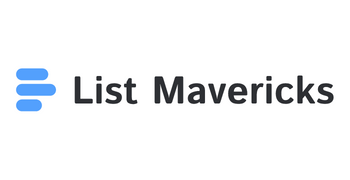In today’s fast-paced marketing landscape, you have two main ways to reach your audience: inbound and outbound marketing. Both aim to bring in customers, but they go about it in very different ways. Which one is better for your business?
This guide will help you learn the basics of both. By the end, you’ll know more to choose the best marketing strategies for your company.
Understanding Inbound and Outbound Marketing
Inbound and outbound marketing are two different ways businesses try to get customers. They each have their own methods.
Inbound marketing focuses on making valuable content for your target audience. This way, potential customers come to you.
Outbound marketing is more direct. It involves reaching out to potential customers, even if they aren’t looking for you yet.
The Rise of Inbound Marketing
Inbound marketing has become very popular recently. More businesses are realizing the importance of having a strong online presence.
Why Inbound Marketing Works
Inbound marketing works because 63% of consumers start their shopping journey online. By creating content that answers their questions, you become a helpful resource.
Content marketing is one of the best tools for inbound marketing. Creating blog posts, videos, and podcasts lets you educate your audience and build trust. This helps guide potential leads down the sales funnel.
Social media marketing is also key. By sharing content and engaging with your followers, you can build brand awareness and attract potential customers. This turns your social media posts into a lead generation tool.
The Cost-Effectiveness of Inbound Marketing
Inbound marketing is not only effective but also cost-efficient. Research shows that inbound marketing costs 62% less per lead than traditional outbound marketing.
This makes it a great option for businesses with different marketing budgets. You save money while still generating leads.
Good marketing focuses on generating leads and nurturing them into customers. Marketing software can play a vital part of that.
The Evolving Role of Outbound Marketing
Even though inbound marketing is popular, outbound marketing still matters. But, it has changed a lot in recent years.
Modern Outbound Marketing Tactics
Outbound marketing isn’t just about cold calling anymore. Modern digital tactics are important.
These include:
- Targeted display advertising.
- Social media advertising.
- Email marketing campaigns.
- Retargeting ads.
These allow for better targeting than old-school methods. This addresses criticisms about older outbound marketing.
Consider adding marketing email marketing to the mix too. Also consider using marketing resources like radio ads telemarketing for additional channels.
The Power of Integration
The best approach for many businesses is combining both strategies. This lets companies use the best parts of each method.
For example, content from inbound marketing can be used in outbound email campaigns. Information from outbound efforts can be useful for future content.
This creates a more effective marketing strategy overall. The difference outbound can make when paired correctly can lead to better marketing efforts.
Comparing Inbound and Outbound Marketing Strategies
To understand the difference between inbound and outbound marketing, let’s compare key parts:
| Aspect | Inbound Marketing | Outbound Marketing |
|---|---|---|
| Primary Focus | Attracting customers with valuable content | Directly reaching out to potential customers |
| Common Tactics | SEO, content marketing, social media | Paid search, cold calling, direct mail, cold email |
| Customer Interaction | Customer-initiated | Company-initiated |
| Cost per Lead | Usually lower | Often higher |
| Time to See Results | Longer-term | Can be faster |
| Targeting | Very targeted | Can be broad or targeted |
Choosing the Right Strategy for Your Business
There’s no single best choice between inbound and outbound marketing strategies. It depends on your business and goals.
Consider Your Industry and Audience
Some industries work better with certain marketing approaches. B2B companies with long sales cycles might prefer inbound marketing because it builds relationships.
Businesses selling consumer products might find outbound tactics, like targeted ads, work better. These drive immediate sales.
Think about what your audience likes. If 54% of B2B buyers use social media, focus on that for inbound. This is one of the better inbound marketing strategies.
Evaluate Your Resources and Goals
Inbound marketing takes time and effort for creating good content consistently. If you can do that and want long-term growth, it’s a great choice.
Outbound marketing can give faster results, but it can cost more. It might be good if you need leads or sales quickly.
If your primary marketing focuses on reaching prospective customers, then consider a paid option.
Consider a Hybrid Approach
Inbound vs outbound marketing isn’t an all-or-nothing choice. Many successful companies combine them.
For example, use inbound marketing to educate potential customers. Then use outbound tactics to encourage a purchase. This blended approach can give you great results, and takes time to master.
The marketing landscape changes often. Having a marketing funnel that takes advantage of inbound marketing continues to get more valuable over time. Using this holistic strategy can get people interested in what you are promoting and build better lasting relationships.
Measuring Success in Inbound and Outbound Marketing
No matter which strategy you use, measure your results. Then you continuously update your strategy to make it better.
Inbound Marketing Metrics
- Organic website traffic and search traffic.
- How people engage with your content (time on page, social shares).
- Lead quality and how many leads turn into customers.
- How well you rank on search engines for keywords.
Measuring effectiveness is an ongoing process. When you have customers actively seeking information, that’s good. It helps your inbound leads become sales leads, and customers finding you through your content can help too. Creating useful content can also become marketing content.
Outbound Marketing Metrics
- How many people click on your ads (click-through rates).
- How many people respond to direct mail or email newsletters.
- How much it costs to get a customer (cost per acquisition).
- How much money you make from ads compared to what you spend (ROAS).
By checking these metrics often, you can improve your marketing. You can also spend your budget better.
Distributing content properly can have a positive effect. This also creates more online marketing through search engine traffic.
The Future of Inbound and Outbound Marketing
As technology changes, inbound and outbound marketing will too. New things like AI and voice search are already changing how companies do marketing.
For inbound, this could mean making more interactive content. For outbound, it could mean even better targeting.
No matter what, the main ideas of each will stay important. Companies that adapt to new tech will do best. Billboards cold calling techniques will continue to be phased out, in favor of better marketing software and automation.
FAQs about inbound and outbound marketing
What is inbound and outbound marketing?
Inbound marketing is about making content that brings customers to you. Outbound marketing is reaching out to potential leads, like with advertising or a cold email.
What is inbound and outbound with example?
An inbound example is a blog post that brings in readers. An outbound example is sending an email blast promoting products to potential leads.
What is inbound marketing and example?
Inbound marketing attracts your ideal customers with content. One example is a video that shows off your product while giving helpful information.
What is an example of outbound marketing?
An example is a billboard ad. Billboards cold display messages to a large number of people. You don’t wait for them to find you, as that would be the inbound marketing content strategy.
Conclusion
Inbound and outbound marketing both have pros and cons for businesses. Inbound attracts customers with great content, while outbound is more direct.
The best plan is knowing your business and your audience. Whether you choose inbound, outbound, or a mix, stay consistent. Then be willing to adjust as you see results.
By using inbound and outbound marketing strategies thoughtfully, you can create growth for your business. It’s not just about attracting customers. It’s about building relationships that lead to loyal customers over time.

